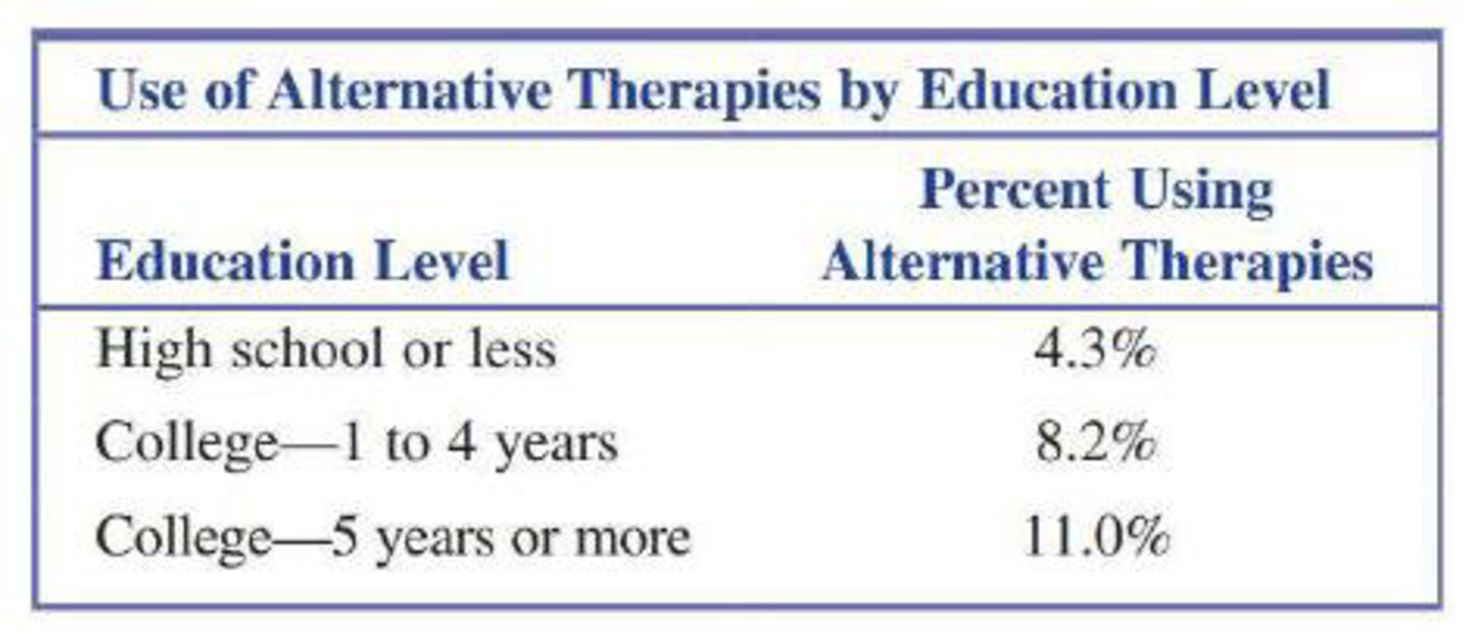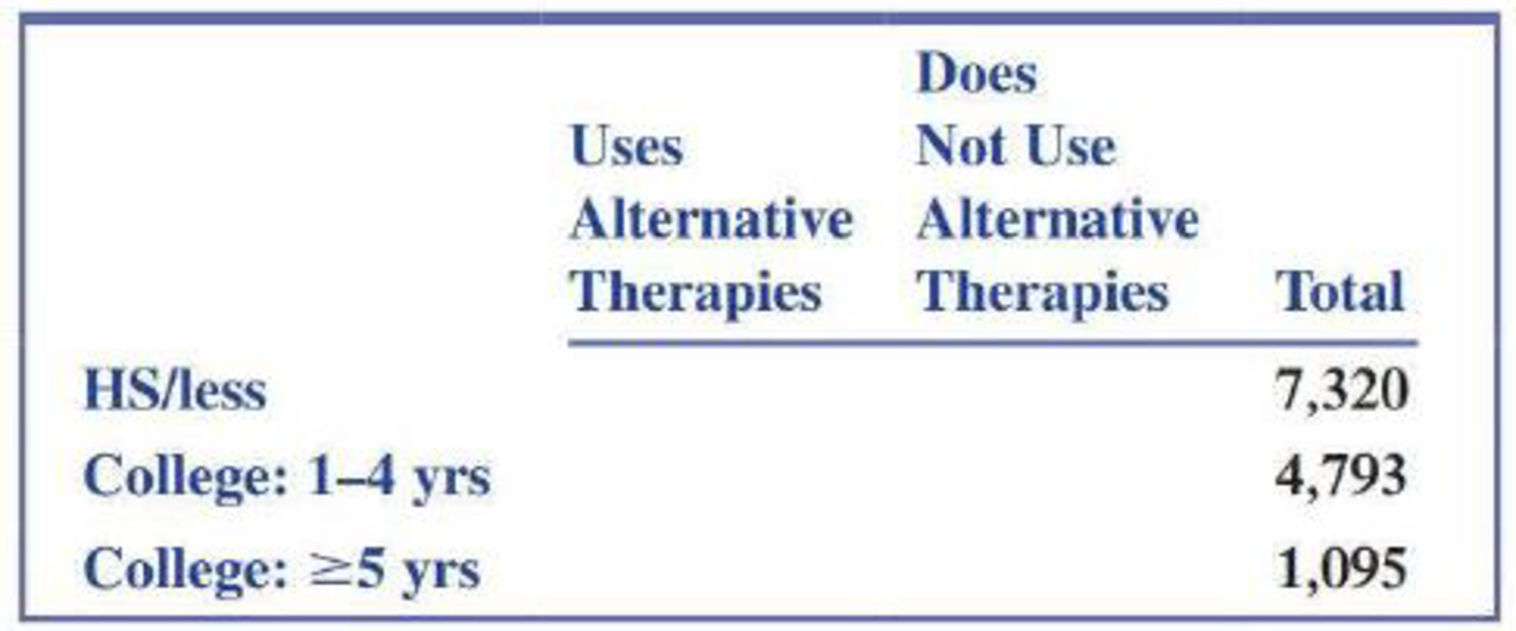
Concept explainers
The article “U.S. Investors Split Between Digital and Traditional Banking” (gallup.com, August 5, 2016, retrieved April 25, 2017) summarized data from a Gallup survey of a random sample of 1019 U.S. adults with investments of $10,000 or more. Based on the survey data, it was estimated that 31 % of investors manage their investments by doing everything they possibly can online. But the authors of the article also noted that there was quite a difference between younger investors (age 18 to 49) and older investors (age 50 and older). For younger investors, 43% said they do everything they possibly can online, while the percentage for older investors was 23%.
- a. Use the given information to estimate P(O), P(O|Y), and P(O|F) where O =
event that a randomly selected investor does everything possible online, Y = event that a randomly selected investor is age 18 to 49, and F = event that a ran do ml y selected investor is 50 years old or older. - b. Suppose that 40% of investors are between the ages of 18 and 49. Use the probabilities from Part (a) and the estimate P(Y) = 0.40 to calculate P(Y|O) and write a sentence interpreting this value.
6.81 The accompanying table summarizes data from a medical expenditures survey carried out by the National Center for Health Statistics (“Assessing the Effects of Race and Ethnicity on Use of Complementary and Alternative Therapies in the USA,” Ethnicity and Health [2005]: 19-32).

These percentages were based on data from 7320 people whose education level was high school or less, 4793 people with I to 4 years of college, and 1095 people with 5 or more years of college.
- a. Use the information given to determine the number of respondents falling into each of the six cells of the table below.

- b. Construct a table of estimated probabilities by dividing the count in each of the six table cells by the total sample size, n = 13,208.
- c. The authors of the study indicated that the sample was selected in a way that makes it reasonable to regard the estimated probabilities in the table from Part (b) as representative of the adult population in the United States. Use the information in that table to estimate the following probabilities for adults in the United States.
- i. The
probability that a randomly selected individual has 5 or more years of college. - ii. The probability that a randomly selected individual uses alternative therapies.
- i. The
Want to see the full answer?
Check out a sample textbook solution
Chapter 6 Solutions
Introduction To Statistics And Data Analysis
- Many investors and financial analysts believe the Dow Jones Industrial Average (DJIA) gives a good barometer of the overall stock market. On January 31, 2006, 9 of the 30 stocks making up the DJIA increased in price (The Wall Street Journal, February 1, 2006). On the basis of this fact, a financial analyst claims we can assume that 30% of the stocks traded on the New York Stock Exchange (NYSE) went up the same day. A sample of 61 stocks traded on the NYSE that day showed that 27 went up. You are conducting a study to see if the proportion of stocks that went up is is significantly more than 0.3. You use a significance level of a = 0.10. What is the test statistic for this sample? (Report answer accurate to three decimal places.) test statistic What is the p-value for this sample? (Report answer accurate to four decimal places.) p-value = The p-value is... less than (or equal to) a greater than a This test statistic leads to a decision to... reject the null accept the null fail to…arrow_forwardMany investors and financial analysts believe the Dow Jones Industrial Average (DJIA) gives a good barometer of the overall stock market. On January 31, 2006, 9 of the 30 stocks making up the DJIA increased in price (The Wall Street Journal, February 1, 2006). On the basis of this fact, a financial analyst claims we can assume that 30% of the stocks traded on the New York Stock Exchange (NYSE) went up the same day. A sample of 72 stocks traded on the NYSE that day showed that 12 went up. You are conducting a study to see if the proportion of stocks that went up is significantly less than 0.3. You use a significance level of a = 0.005. What is the test statistic for this sample? (Report answer accurate to three decimal places.) test statistic = What is the p-value for this sample? (Report answer accurate to four decimal places.) p-value = The p-value is... O less than (or equal to) a O greater than a This test statistic leads to a decision to... O reject the null O accept the null O…arrow_forwardMany investors and financial analysts believe the Dow Jones Industrial Average (DJIA) gives a good barometer of the overall stock market. On January 31, 2006, 9 of the 30 stocks making up the DJIA increased in price (The Wall Street Journal, February 1, 2006). On the basis of this fact, a financial analyst claims we can assume that 30% of the stocks traded on the New York Stock Exchange (NYSE) went up the same day. A sample of 72 stocks traded on the NYSE that day showed that 10 went up. You are conducting a study to see if the proportion of stocks that went up is is significantly less than 0.3. You use a significance level of a 0.002. What is the test statistic for this sample? (Report answer accurate to three decimal places.) test statistic %3D What is the p-value for this sample? (Report answer accurate to four decimal places.) p-value =arrow_forward
- According to a regional association of medical colleges, only 41% of medical school applicants were admitted to a medical school in the fall of 2011. Upon hearing this, the trustees of Striving College expressed concern that only 88 of the 230 students in their class of 2011 who applied to medical school were admitted. The college president assured the trustees that this was just the kind of year-to-year fluctuation in fortunes that is to be expected and that, in fact, the school's success rate was consistent with the regional average. Complete parts a through c. a) What are the hypotheses? H0: p ▼ greater than> not equals≠ equals= less than< nothing HA: p ▼ equals= not equals≠ less than< greater than> nothing (Type integers or decimals.) b) Check the conditions and find the P-value. Which assumptions and conditions below are met? Select all that apply. A. The 10% condition is met. B. The randomization condition is…arrow_forwardMany investors and financial analysts believe the Dow Jones Industrial Average (DJIA) gives a good barometer of the overall stock market. On January 31, 2006, 9 of the 30 stocks making up the DJIA increased in price (The Wall Street Journal, February 1, 2006). On the basis of this fact, a financial analyst claims we can assume that 30% of the stocks traded on the New York Stock Exchange (NYSE) went up the same day.A sample of 76 stocks traded on the NYSE that day showed that 21 went up.You are conducting a study to see if the proportion of stocks that went up is significantly less than 0.3. You use a significance level of α=0.01α=0.01.What is the test statistic for this sample? (Report answer accurate to three decimal places.)test statistic = What is the p-value for this sample? (Report answer accurate to four decimal places.)p-value =arrow_forwardMany investors and financial analysts believe the Dow Jones Industrial Average (DJIA) gives a good barometer of the overall stock market. On January 31, 2006, 9 of the 30 stocks making up the DJIA increased in price (The Wall Street Journal, February 1, 2006). On the basis of this fact, a financial analyst claims we can assume that 30% of the stocks traded on the New York Stock Exchange (NYSE) went up the same day. A sample of 76 stocks traded on the NYSE that day showed that 27 went up. You are conducting a study to see if the proportion of stocks that went up is significantly more than 0.3. You use a significance level of a = 0.01. What is the test statistic for this sample? (Report answer accurate to three de ecimal places.) test statistic = 2.78 What is the p-value for this sample? (Report answer accurate to four decimal places.) p-value = 0.0054arrow_forward
- Many investors and financial analysts believe the Dow Jones Industrial Average (DJIA) gives a good barometer of the overall stock market. On January 31, 2006, 9 of the 30 stocks making up the DJIA increased in price (The Wall Street Journal, February 1, 2006). On the basis of this fact, a financial analyst claims we can assume that 30% of the stocks traded on the New York Stock Exchange (NYSE) went up the same day. A sample of 67 stocks traded on the NYSE that day showed that 10 went up. You are conducting a study to see if the proportion of stocks that went up is is significantly less than 0.3. You use a significance level of a = 0.005. What is the test statistic for this sample? (Report answer accurate to three decimal places.) test statistic = What is the p-value for this sample? (Report answer accurate to four decimal places.) p-value = The p-value is... | less than (or equal to) a greater than a This test statistic leads to a decision to... O reject the null |accept the null O…arrow_forwardMany investors and financial analysts believe the Dow Jones Industrial Average (DJIA) gives a good barometer of the overall stock market. On January 31, 2006, 9 of the 30 stocks making up the DJIA increased in price (The Wall Street Journal, February 1, 2006). On the basis of this fact, a financial analyst claims we can assume that 30% of the stocks traded on the New York Stock Exchange (NYSE) went up the same day.A sample of 52 stocks traded on the NYSE that day showed that 18 went up.You are conducting a study to see if the proportion of stocks that went up is is significantly more than 0.3. You use a significance level of α=0.10What is the test statistic for this sample? Use ˆpp^ rounded to 4 decimal places. (Report answer accurate to 4 decimal places.)test statistic = What is the p-value for this sample? (Report answer accurate to 4 decimal places.)p-value = The p-value is... less than (or equal to) α greater than α This p-value leads to a decision to... reject the null…arrow_forwardMany investors and financial analysts believe the Dow Jones Industrial Average (DJIA) gives a good barometer of the overall stock market. On January 31, 2006, 9 of the 30 stocks making up the DJIA increased in price (The Wall Street Journal, February 1, 2006). On the basis of this fact, a financial analyst claims we can assume that 30% of the stocks traded on the New York Stock Exchange (NYSE) went up the same day. A sample of 64 stocks traded on the NYSE that day showed that 12 went up. You are conducting a study to see if the proportion of stocks that went up is significantly less than 0.3. You use a significance level of a = 0.02. What is the test statistic for this sample? (Report answer accurate to three decimal places.) test statistic What is the p-value for this sample? (Report answer accurate to four decimal places.) p-value W The p-value is... O less than (or equal to) a Ogreater than a This test statistic leads to a decision to... O reject the null Oaccept the null fail to…arrow_forward
- Many investors and financial analysts believe the Dow Jones Industrial Average (DJIA) gives a good barometer of the overall stock market. On January 31, 2006, 9 of the 30 stocks making up the DJIA increased in price (The Wall Street Journal, February 1, 2006). On the basis of this fact, a financial analyst claims we can assume that 30% of the stocks traded on the New York Stock Exchange (NYSE) went up the same day.A sample of 64 stocks traded on the NYSE that day showed that 27 went up.You are conducting a study to see if the proportion of stocks that went up is is significantly more than 0.3. You use a significance level of α=0.01α=0.01.What is the test statistic for this sample? (Report answer accurate to two decimal places.) test statistic = What is the p-value for this sample? (Report answer accurate to four decimal places.) p-value = The p-value is... less than (or equal to) αα greater than αα This test statistic leads to a decision to... reject the null accept the null fail…arrow_forwardMany investors and financial analysts believe the Dow Jones Industrial Average (DJIA) gives a good barometer of the overall stock market. On January 31, 2006, 9 of the 30 stocks making up the DJIA increased in price (The Wall Street Journal, February 1, 2006). On the basis of this fact, a financial analyst claims we can assume that 30% of the stocks traded on the New York Stock Exchange (NYSE) went up the same day.A sample of 64 stocks traded on the NYSE that day showed that 12 went up.You are conducting a study to see if the proportion of stocks that went up is is significantly less than 0.3. You use a significance level of α=.10a.) The sample proportion ˆp= (write as a fraction)b.) What is the test statistic for this sample? (Report answer accurate to 2 decimal places.)test statistic = c.) What is the p-value for this sample? (Report answer accurate to 4 decimal places.)p-value =arrow_forwardBased on a USA Today poll, 10% of the population believes that college is no longer a good investment. Would it be unusual if 100 of the chosen people beleive that college is no longer a good investment? What does this result suggest?arrow_forward
 Glencoe Algebra 1, Student Edition, 9780079039897...AlgebraISBN:9780079039897Author:CarterPublisher:McGraw Hill
Glencoe Algebra 1, Student Edition, 9780079039897...AlgebraISBN:9780079039897Author:CarterPublisher:McGraw Hill Big Ideas Math A Bridge To Success Algebra 1: Stu...AlgebraISBN:9781680331141Author:HOUGHTON MIFFLIN HARCOURTPublisher:Houghton Mifflin Harcourt
Big Ideas Math A Bridge To Success Algebra 1: Stu...AlgebraISBN:9781680331141Author:HOUGHTON MIFFLIN HARCOURTPublisher:Houghton Mifflin Harcourt Holt Mcdougal Larson Pre-algebra: Student Edition...AlgebraISBN:9780547587776Author:HOLT MCDOUGALPublisher:HOLT MCDOUGAL
Holt Mcdougal Larson Pre-algebra: Student Edition...AlgebraISBN:9780547587776Author:HOLT MCDOUGALPublisher:HOLT MCDOUGAL


